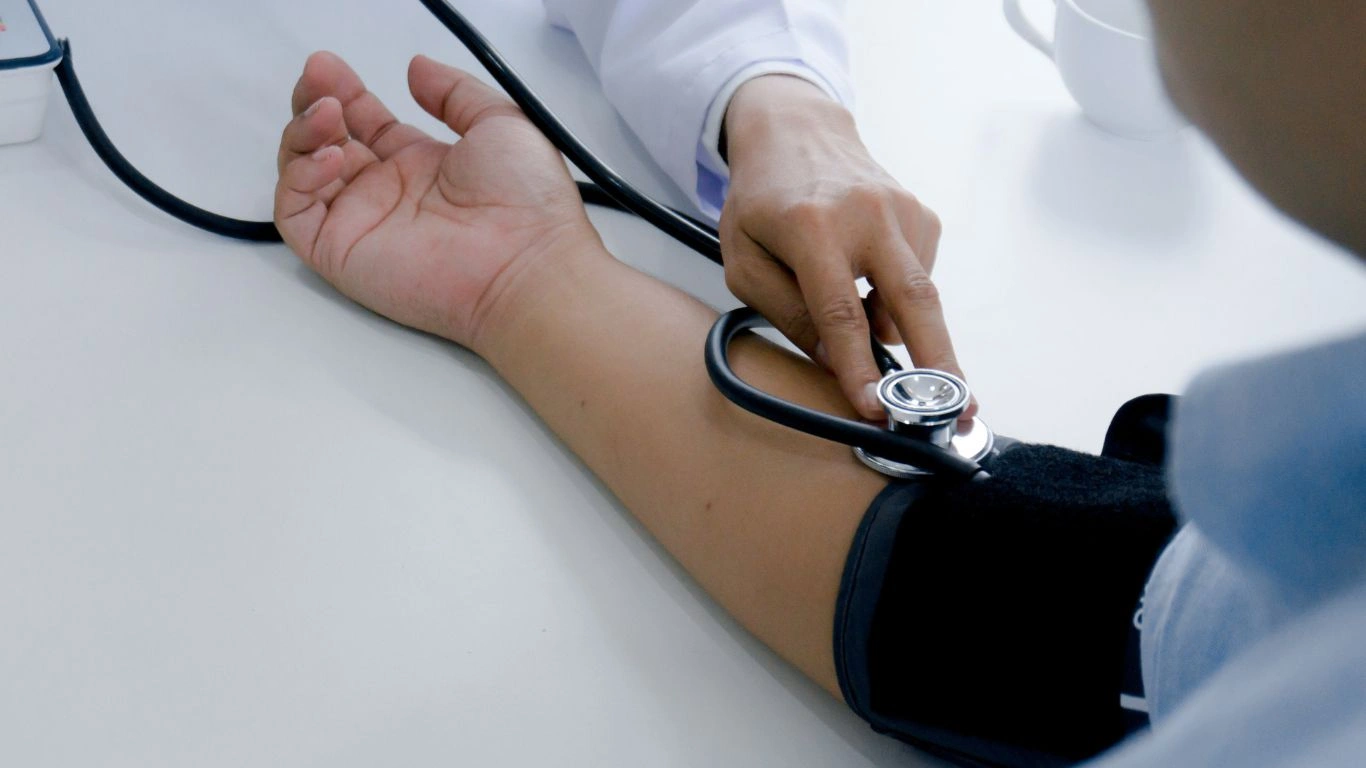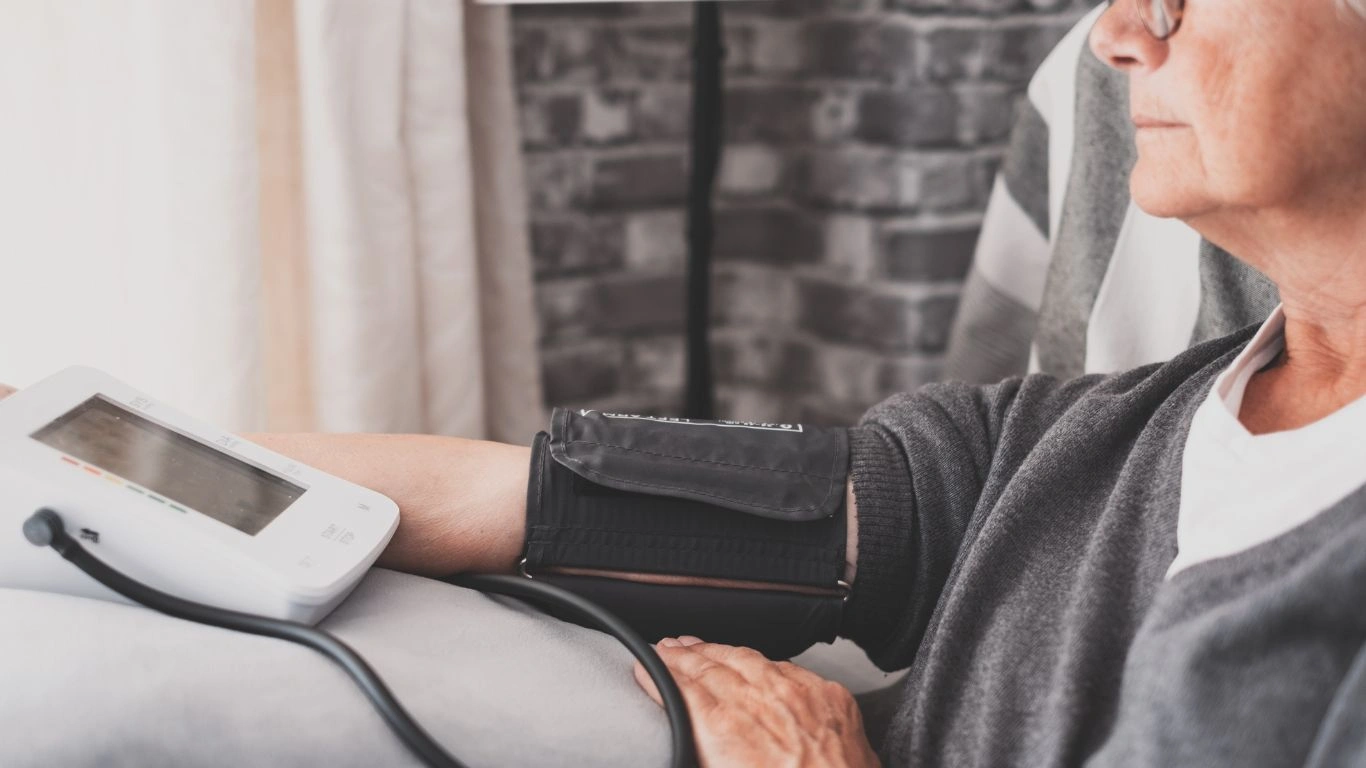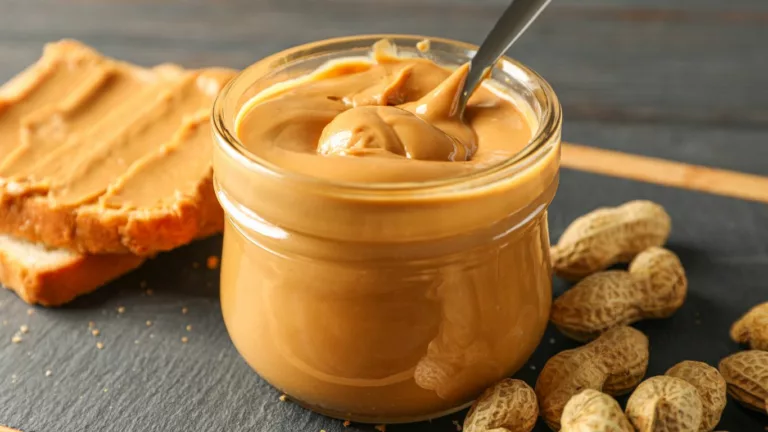10 Smart Tips on How to Eat Out with High Blood Pressure Effectively
Eating out with high blood pressure can feel like a challenge at first, but I assure you, it’s completely manageable with a few simple adjustments. As someone who has spent years helping patients manage their hypertension, I know it can be tricky to navigate restaurant menus when you’re trying to keep your blood pressure in check. But don’t worry; it’s all about making informed choices, being mindful of what you order, and knowing which foods to avoid. Trust me, managing high blood pressure doesn’t mean giving up on eating out; it just means being a little more thoughtful about your choices.
Understanding High Blood Pressure and Eating Out

First off, let’s talk about why eating out can be a bit tricky when you have high blood pressure. High blood pressure, or hypertension, is a condition where the force of your blood against the walls of your arteries is consistently too high. This can lead to serious health issues, including heart disease, kidney problems, and strokes. One of the main culprits when dining out is sodium. Many restaurant dishes—especially fast food or processed options—are loaded with salt, which can contribute to a dangerous spike in your blood pressure.
In fact, most people with high blood pressure are advised to limit their sodium intake to about 1,500 to 2,300 milligrams per day. This can be difficult to track when eating at a restaurant, where portion sizes and sodium content are often hidden. But don’t let this discourage you! With a little knowledge and planning, you can enjoy dining out without compromising your health.
How to Eat Out With High Blood Pressure: Start by Choosing the Right Restaurant
Before we even get to the menu, let’s talk about picking the right place to eat. A little research can go a long way. Some restaurants cater to specific dietary needs, like low-sodium or heart-healthy options, and they often offer healthier alternatives. Chains may even post nutrition information on their websites, making it easier for you to plan ahead.
When possible, choose restaurants that focus on fresh ingredients and offer customization. Mexican restaurants, Mediterranean spots, or sushi bars are often good choices since you can avoid processed foods and salt-heavy condiments. However, even if you end up at a steakhouse or a burger joint, don’t fret—there are ways to make it work. The key is asking the right questions and making small adjustments to the dish.

When you’re looking at the menu, there are a few things to keep in mind. Here’s a quick guide on how to make heart-healthy choices without feeling like you’re missing out on flavor:
- Look for grilled, baked, or steamed options: These methods of cooking tend to use less oil and salt. Opt for grilled fish or chicken over fried foods, and ask if your dish can be prepared without added salt.
- Ask for dressings and sauces on the side: Dressings and sauces are often packed with sodium and hidden sugars. If you can’t avoid them, just dip your fork in the sauce instead of drenching your meal in it.
- Avoid processed meats: Processed meats like bacon, sausage, and deli meats can have high sodium content. If you’re ordering a sandwich or salad, ask to skip these additions.
- Watch out for soups: While soups might seem healthy, many are loaded with sodium. If you’re craving soup, ask if the restaurant offers a low-sodium option or order a broth-based soup instead of cream-based ones.
- Choose whole grains: Whole grain dishes—like whole wheat pasta, brown rice, or quinoa—are great alternatives to refined grains and are packed with fiber to help keep your blood pressure stable.
Personalizing Your Meal: Don’t Be Afraid to Ask
One of the best tips I can give you as a healthcare professional is: don’t be shy about asking questions! You’re in charge of your health, and most restaurants are happy to accommodate special dietary needs. Whether it’s asking for your meal to be prepared without extra salt, requesting a side of steamed vegetables instead of fries, or swapping out high-sodium condiments for olive oil or balsamic vinegar, these small changes can make a big difference in keeping your blood pressure in check.
When I work with my patients, I always encourage them to communicate with their servers. I’ve had numerous patients tell me they’ve received great service just by being open about their dietary needs. Servers are often trained to help guests make healthy choices, and they’ll appreciate your proactive approach. Plus, it ensures that your meal is prepared exactly how you want it!
How to Make Healthy Choices Without Feeling Like You’re Missing Out

One of the most common concerns I hear from patients is that they feel like they’re missing out on the fun of dining out when they’re trying to manage their high blood pressure. But the truth is, you don’t have to compromise flavor for health. With the right adjustments, you can still enjoy your favorite dishes without the guilt. I’ve seen many patients indulge in a beautiful steak, perfectly seasoned, but with a few strategic changes to the sides and preparation methods, they’ve been able to enjoy a hearty meal without risking a blood pressure spike.
It’s all about making substitutions that work for you. For instance, if you’re craving a burger, opt for a leaner patty, like turkey or chicken, and skip the cheese or bacon. If you’re in the mood for pasta, ask for it to be prepared with olive oil and fresh veggies instead of a creamy sauce. These small tweaks won’t leave you feeling deprived—they’ll help you enjoy the experience of eating out while still managing your blood pressure.
Remember, managing your high blood pressure doesn’t mean you have to skip out on socializing or enjoying good food. It just takes a little awareness and some clever substitutions. In the next section, we’ll dive deeper into specific restaurant types and how you can navigate them with hypertension in mind.
Eating Out at Different Types of Restaurants: What to Know

Now that you have a solid understanding of the basics of eating out with high blood pressure, let’s dive into the specific types of restaurants and how to make smart choices at each one. Every restaurant has its own menu style, and understanding what you’re working with can help you make better decisions without feeling overwhelmed. Whether you’re at a fast food joint, a fine-dining restaurant, or a casual cafe, there are always ways to eat heart-healthy while still enjoying your meal.
Fast Food: Yes, It’s Possible to Make Healthy Choices
Fast food is probably one of the trickiest types of restaurants for someone with high blood pressure. With the emphasis on quick, processed meals, it’s easy to forget about your health in the rush to grab something fast. But here’s the thing: it’s not impossible to make healthier choices, even at fast food chains. In fact, I’ve helped countless patients enjoy their favorite fast food without compromising their health. It’s all about finding the right options and customizing your order.
First, aim for grilled instead of fried options. Fried chicken and fries are typically packed with unhealthy fats and sodium, while grilled chicken sandwiches or salads are better options. You can also ask for the dressing on the side or skip it altogether. Many fast food places now offer fruit or side salads as alternatives to fries, which are perfect for reducing your sodium and calorie intake.
Another trick I recommend to my patients is to check the nutritional information, which many fast food chains provide online or in-store. A quick glance at the sodium content can help you avoid hidden salt bombs. I’ve had patients show me the menu beforehand to plan ahead, and they felt so much more in control when they ordered. When in doubt, ordering a small-sized meal or sharing with a friend can help keep portion sizes in check.
Dining at Casual Restaurants: A Great Place to Customize Your Meal

Casual dining restaurants like family-style eateries or casual American diners can be more flexible with your meal options, which is great news for those with high blood pressure. These types of restaurants often offer a variety of dishes, so you can usually find something that fits within your dietary goals. However, it’s still important to keep a few things in mind when ordering.
One of the best strategies here is to focus on ordering “lighter” versions of popular dishes. Many restaurants offer lighter, “healthy” menu sections or items, such as grilled fish, chicken breast, or vegetable-based entrees. Just like at fast food restaurants, be mindful of sauces and dressings. Ask for them on the side, or opt for a vinaigrette instead of creamy dressings. I can’t tell you how many times a simple switch to olive oil or balsamic vinegar has transformed a meal into something much healthier.
If you’re ordering a salad, try to stick to fresh vegetables, lean proteins (like grilled chicken or fish), and a light dressing. If the restaurant serves bread, you can usually ask for it to be served without butter. And if you really want to enjoy a side dish, opt for steamed vegetables, roasted potatoes, or a baked sweet potato instead of fries or mashed potatoes. These small swaps can make a big difference in keeping your blood pressure in check.
Fine Dining: Embrace Customization for Healthier Choices
Fine dining is often seen as a more indulgent experience, and understandably so—there’s nothing quite like a beautifully prepared meal in an elegant atmosphere. But just because you’re in a fine dining setting doesn’t mean you can’t make heart-healthy choices. In fact, these types of restaurants typically offer a higher quality of food, with more room to customize your order, which can be a game changer for someone managing high blood pressure.
When eating at a fine-dining restaurant, take advantage of the server’s knowledge. Fine dining staff are usually well-trained and can accommodate specific requests, such as reducing the amount of salt or changing the cooking method. I always advise my patients to communicate their needs up front—let the server know that you’re managing high blood pressure and would prefer your meal to be prepared with less salt. Most high-end restaurants will be more than happy to accommodate you. You’d be surprised at how much they want to ensure you have a great experience, and it’s very likely they’ll offer to adjust the preparation methods to suit your needs.
Another tip is to focus on the main course and avoid the extras. At fine dining restaurants, you may be tempted by the tempting selection of appetizers, sides, and desserts. But I encourage you to stick with one course and make it a healthy one. Go for grilled, roasted, or steamed options and request that any heavy sauces be served on the side. If you’re in the mood for a dessert, consider sharing with someone or opting for fruit-based desserts like sorbet or fresh berries. Fine dining often includes smaller portion sizes, which can help prevent overeating—a common pitfall for those trying to manage their weight and blood pressure.
Eating Out at Ethnic Restaurants: Enjoy Flavorful, Healthy Options

Ethnic restaurants are another wonderful option for those looking to eat out with high blood pressure. Whether you’re enjoying Mediterranean, Indian, Mexican, or Asian cuisine, there are plenty of opportunities to choose heart-healthy meals without sacrificing flavor. The key is to make informed choices based on the cuisine and be mindful of how dishes are prepared.
For example, Mediterranean cuisine offers a variety of grilled fish and vegetable dishes, perfect for someone with high blood pressure. You can also enjoy hearty salads and fresh olive oil-based dressings. In Indian restaurants, try tandoori dishes, which are made by grilling meat without excessive oil. Avoid dishes with creamy sauces like tikka masala, as they tend to be high in fat and sodium, and instead, go for vegetable-based curries or stews that are lightly spiced.
If you’re at a Mexican restaurant, you can often find healthier options like grilled chicken or fish tacos, as well as plenty of fresh vegetables and beans. Just be cautious with toppings like cheese, sour cream, and guacamole, as they can add extra calories and fat. And, if you’re craving a burrito, opt for a “bowl” instead of a tortilla to skip the added carbs and fats.
Overall, ethnic restaurants can be an exciting and diverse way to enjoy healthy meals without feeling like you’re missing out. Just remember to ask for modifications when needed, and stick with grilled or steamed options whenever possible. You’ll be surprised at how many delicious and heart-healthy choices are available to you.
Planning Ahead: How to Manage Your Hypertension Even Before You Leave the House

If you have high blood pressure and want to eat out, preparation is key. One of the most powerful strategies I recommend to my patients is planning ahead. I understand that eating out can be spontaneous and fun, but a little foresight can make all the difference in your ability to manage your health while still enjoying yourself.
Before you head out to your favorite restaurant, take a moment to look up the menu online. Many restaurants post their menus and even nutritional information on their websites, which is incredibly helpful for figuring out your options. If a restaurant doesn’t provide nutritional details, consider calling ahead and asking if they can offer information on calories and sodium content. This can help you make informed decisions and avoid potential surprises when you’re sitting at the table.
Another great tip is to eat something small at home before you go out. I often suggest my patients have a light snack, like a piece of fruit or a small handful of nuts, before heading to the restaurant. This will help curb your hunger and prevent you from overeating when you arrive. When you’re not starving, you’ll be less likely to make impulsive, sodium-laden choices just because they sound appealing in the moment.
Portion Control: A Key to Keeping Your Blood Pressure in Check
Portion sizes are a huge factor when it comes to managing high blood pressure. Many restaurant portions, especially at chain restaurants or fast food spots, are enormous—often much larger than the typical portion we should be eating. One of the best ways to navigate this is to practice portion control. You don’t have to eat everything on your plate, and there’s no shame in asking for a to-go box early in the meal. If the portion is too large, consider sharing your meal with a friend or family member. I always remind my patients that it’s okay to enjoy the food and atmosphere without overloading on calories, fat, or sodium.
Another tip is to focus on balance. Try to make sure your plate has a mix of lean protein, healthy fats, and vegetables. For example, if you’re ordering a main course, try to balance it with a side of steamed vegetables or a side salad. Some restaurants are happy to swap out high-calorie, high-sodium sides for something healthier. It never hurts to ask!
Be Mindful of Alcohol: How It Affects Blood Pressure

While it’s okay to enjoy a drink or two now and then, it’s important to be mindful of alcohol consumption when you have high blood pressure. Excessive alcohol can lead to a spike in blood pressure, and if you’re already managing hypertension, it’s wise to keep it in moderation. For most people with high blood pressure, the recommendation is no more than one drink per day for women and two drinks per day for men.
If you’re dining out, I recommend opting for lower-sodium drinks and being mindful of your drink choices. Cocktails made with sugary syrups or sugary sodas can add extra calories, which isn’t ideal for heart health. Instead, try sticking to drinks like wine, beer, or a spirit mixed with club soda or a low-calorie tonic. You can also opt for sparkling water with a splash of lime for a refreshing, alcohol-free option. It’s a great way to enjoy the experience without the negative side effects of alcohol.
When in doubt, ask the server for suggestions on low-sodium drink options or less sugary alternatives. Most servers will be happy to offer their insight and help you find something that fits within your dietary goals.
Snacks and Small Plates: A Great Way to Stay on Track
One of the things I love about eating out is the opportunity to explore different flavors and share dishes. For people with high blood pressure, ordering smaller plates or appetizers can be a great way to sample a variety of flavors without overindulging. Many restaurants now offer smaller, tapas-style plates, which are perfect for anyone managing their blood pressure. These options tend to have smaller portion sizes and can be a better choice compared to larger, more caloric meals.
Look for appetizers that feature vegetables, lean proteins, or whole grains. For instance, you might choose a hummus platter with veggies, a small serving of grilled shrimp, or a quinoa salad. These dishes offer good nutrition without adding too much salt or unhealthy fats to your meal.
Eating out doesn’t have to mean sacrificing the pleasure of food. You can still enjoy the social experience of dining with friends or family while making choices that support your health. It’s all about balance, portion control, and asking the right questions. Plus, over time, you’ll get more comfortable making substitutions and asking for healthier options when you dine out. It becomes second nature!
References
Disclaimer
The information provided in this article is for educational purposes only and is not intended to replace professional medical advice. If you have high blood pressure or any other health concerns, please consult your healthcare provider for personalized advice. The recommendations made here are based on general dietary guidelines for managing hypertension and may not be suitable for everyone.

Dr. Gwenna Aazee is a board-certified Internal Medicine Physician with a special focus on hypertension management, chronic disease prevention, and patient education. With years of experience in both clinical practice and medical writing, she’s passionate about turning evidence-based medicine into accessible, actionable advice. Through her work at Healthusias.com, Dr. Aazee empowers readers to take charge of their health with confidence and clarity. Off the clock, she enjoys deep dives into nutrition research, long walks with her rescue pup, and simplifying medical jargon one article at a time.






